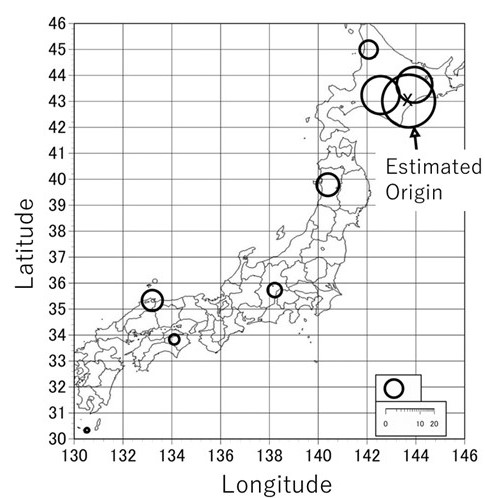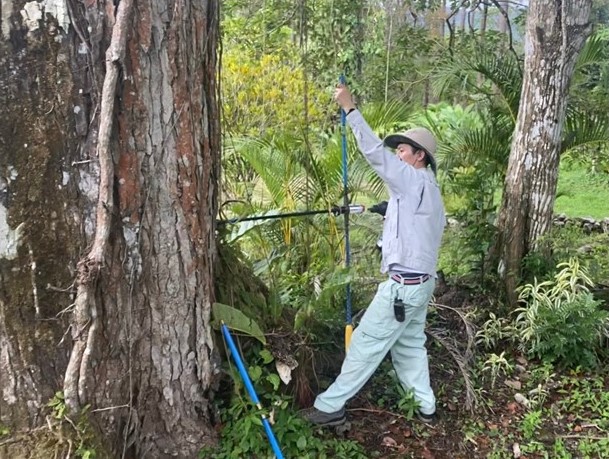Home > International Partnerships > Collaborative Research > Preliminary Research on Establishing Provenance of Timber from Panama using Tree-ring Isotopes
Update:August 24, 2023
Main content starts here.
Preliminary Research on Establishing Provenance of Timber from Panama using Tree-ring Isotopes
1. Partners
International Tropical Timber Organization (ITTO), Panamanian Ministry of Environment (MiA ambiente)
2. Research Period
FY 2023-2024 Funded by the International Tropical Timber Organization (ITTO)
3. Lead Researcher
KAGAWA, Akira (Department of Wood Properties and Processing)
4. Background
In Japan, the revised version of the law titled “Act on Promotion of Use and Distribution of Legally-harvested Wood and Wood Products (Clean Wood Act)” was enacted in 2023. To verify whether the timber has been legally harvested in its country of origin, it is necessary to determine the geographic origin of the timber. In regions such as Japan and Russia, where there are distinct seasons and distinct annual ring boundaries are formed, it is already known that the origin of the timber can be determined by analyzing the stable isotope ratio of its annual rings (Fig.1). On the other hand, illegal logging is especially serious in tropical regions, so there was a hope for the development of a technology to determine the growing years and place of harvest for tropical timber. Interestingly, even in tree species native to the tropics, there is an annual cycle in the oxygen isotope ratio of the wood formed. It is known that there are invisible annual rings of isotope ratios.

Fig.1: Determining the provenance of Mongolian oak (Quercus crispula) from Obihiro, Hokkaido using tree-ring oxygen isotopes.
The diameter of the circles in the figure represents the magnitude of the correlation (t-value) between the oxygen isotope ratio time series in the tree rings of wood from Obihiro (assumed to be of unknown origin) and samples from various locations in Japan. The Mongolian oak from Obihiro, marked with an 'X', exhibits an oxygen isotope ratio most similar to other oaks from the same location. Consequently, the geographic origin of the unknown wood can be pinpointed at the location where the circle's diameter is largest. As evident in the figure, the actual geographic origin matches the estimated one.
5. Research Goal
In this study, we employ the provenancing method pioneered by the FFPRI that utilizes the stable isotope ratios of tree rings (Kagawa & Leavitt 2010). This method is applied to tropical timber species from Panama, a region where the seasons are relatively indistinct, leading to only vague annual ring boundaries. However, we will begin our investigation with teak, which has distinct ring boundaries and is easy to work with. Our objective is to ascertain whether it's feasible to determine the growth years and the geographic origin of Panamanian wood.
6. Research Strategy
We collect tree-ring cores from species targeted for illegal logging across various sites in Panama (Fig.2), with the objective of establishing a tree-ring isotope database. Initially, we investigate whether tree rings from multiple trees at the same location display common isotopic variations. Our goal is to determine the years when these tree rings formed. If successful, our next step is to build a time-series database that averages the stable isotope ratios from tree rings of multiple specimens for each site within Panama. In a subsequent analysis, we treat a tree-ring core sample from a known site as if its origin were unknown. By calculating the correlation coefficient between the isotope ratio time series of this 'unknown' core and the established time series from each site in Panama, we can ascertain the most likely geographic origin of ‘unknown’ core. If this estimated origin aligns with the actual one—indicated by a maximized correlation coefficient—it validates our approach. Achieving accurate determinations of growth years and geographic origins for tropical wood could present a promising technique to combat illegal logging.

Fig.2: A scene of collecting tree-ring cores from a giant mahogany tree in a research location in Panama.
Using the 'Smartborer' – an automated core sampling device developed by the Forest and Forest Products Research Institute – tree-ring core samples were taken from various sites in Panama.
Copyright © Forest Research and Management Organization. All rights reserved.
